12 Best Plants for Creating a Welcoming Front Entrance
A welcoming front door sets the tone for your home, and the right plants can make all the difference. Choosing plants that are both attractive and easy to care for is key to creating a warm and inviting entrance. These plants can add color, texture, and a touch of nature to your outdoor space. Whether you prefer flowers, greenery, or a mix of both, there are plenty of options to suit any style. Let us explore some of the best front door plants that will help make your entryway feel more inviting.
This post may contain affiliate links, which helps keep this content free. Please read our disclosure for more info.
Geraniums
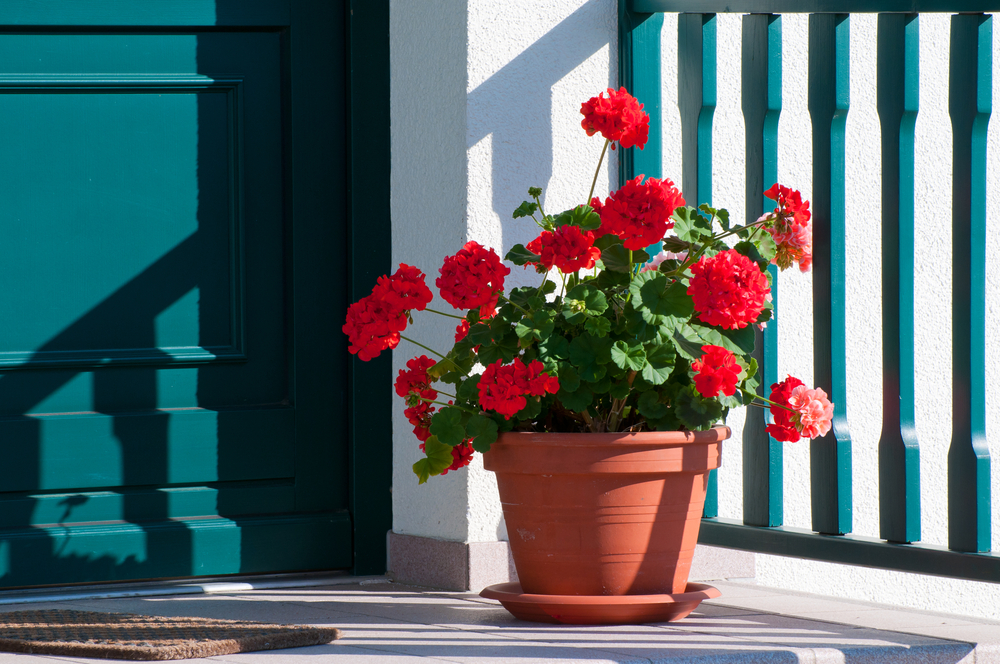
Geraniums are vibrant and hardy plants that thrive in full sun and tolerate heat well, making them perfect for a front door display. They are known for their bright colors and easy care, and they can withstand light rain but should be protected from heavy downpours. Geraniums prefer well-drained soil and should be watered regularly, ensuring that the soil remains moist but not soggy. Pruning spent flowers will encourage more blooms, keeping them looking fresh throughout the season.
These plants can be grown in pots or directly in the ground, adding a splash of color to your entrance. Geraniums need at least four hours of sunlight each day to flourish and grow strong. They do well in warmer climates and can be kept outside as long as the temperatures do not dip below 50 degrees F. For optimal growth, make sure they are placed in a location with good air circulation.
Boxwood
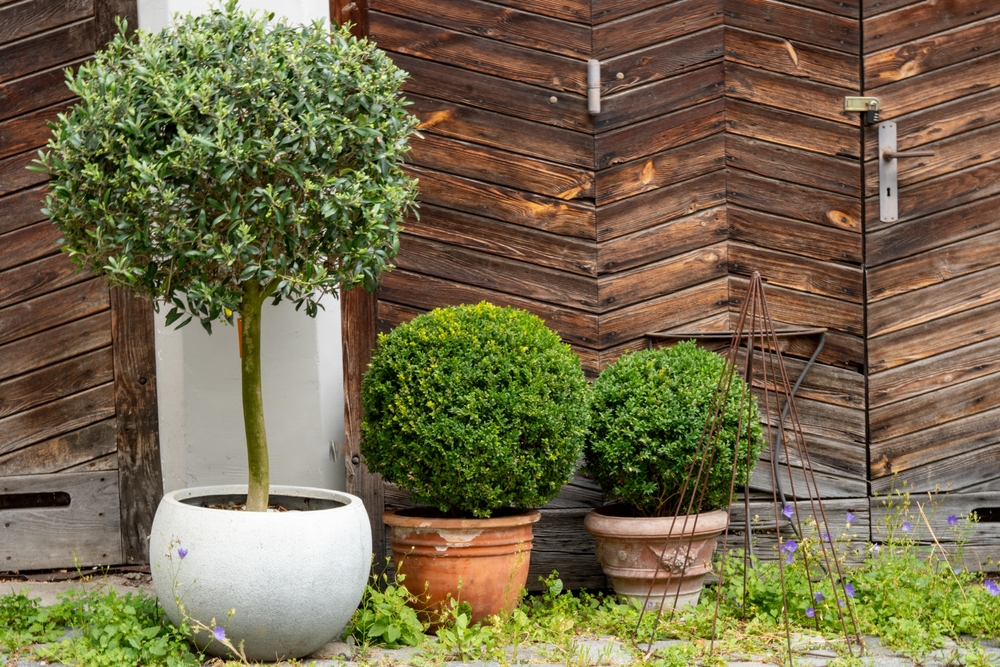
Boxwood is a classic shrub known for its dense, evergreen foliage, which can provide year-round greenery at your front door. This plant can tolerate both heat and rain, but it thrives best in well-drained soil with occasional watering during hot, dry spells. Boxwoods are low-maintenance and only require pruning to maintain their shape and size. They grow best in areas with partial sun, but can tolerate full sun in cooler climates.
Boxwood plants are versatile and can be used in formal hedges or as standalone decorative plants. They are excellent for creating a welcoming, neat appearance at the entrance of your home. During the winter months, boxwoods can hold onto their green leaves, making them ideal for creating a consistent aesthetic throughout the year. Regular watering and occasional fertilization can help them thrive.
Lobelia
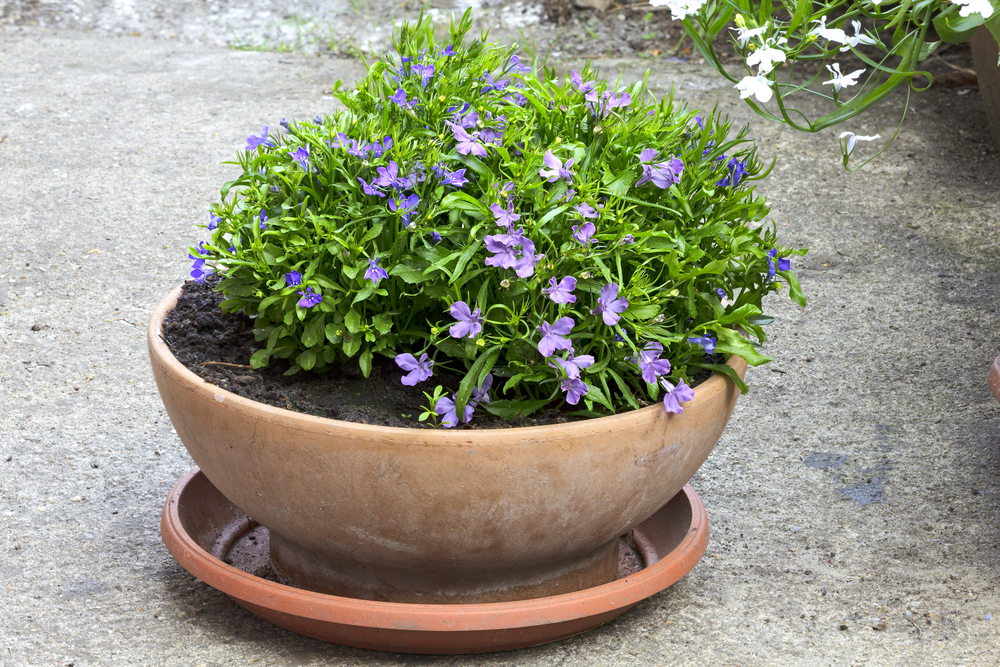
Lobelia is a beautiful trailing plant that adds a pop of color to your front door with its vibrant blue, purple, or white flowers. It tolerates heat and rain well, but it needs to be planted in well-drained soil to avoid waterlogging. Lobelia prefers partial sun to full sun, and it needs to be watered frequently, especially in hot weather. Deadheading spent blooms will encourage new flowers, keeping the plant looking fresh and vibrant.
This plant works well in hanging baskets, window boxes, or as part of a flower bed. It is an annual plant, meaning it will only last one growing season, but its blooms will continue through summer and into fall. Lobelia thrives in humid climates, making it perfect for areas with frequent rain. Keep it shaded during the hottest part of the day if you live in a particularly warm region to prevent wilting.
Petunias
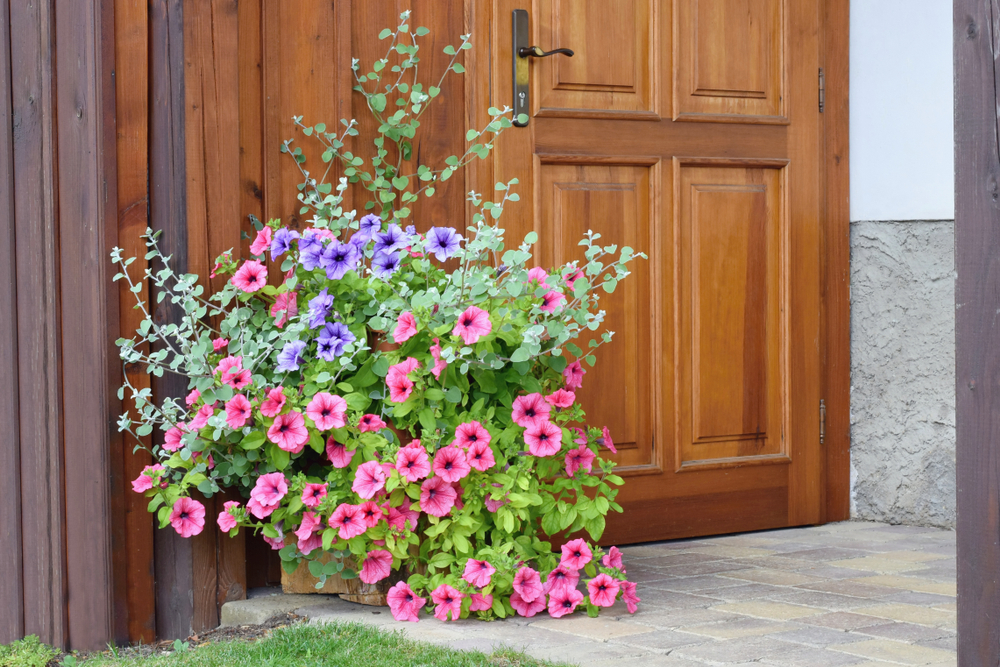
Petunias are bright, colorful flowers that can be an excellent addition to your front door. These plants love full sun and are known to tolerate heat well, making them ideal for warm climates. They also handle occasional rain but should be protected from heavy storms to avoid the blooms being damaged. Petunias need well-drained soil and benefit from regular watering, especially during hot spells.
Petunias bloom all season long, providing continuous color to your front entryway. They are best placed in containers or hanging baskets, as they do well with some mobility to protect them from extreme weather. For better flowering, remove any dead or wilted flowers to encourage fresh blooms. These plants are easy to grow and provide a cheerful touch to your front door.
Hostas
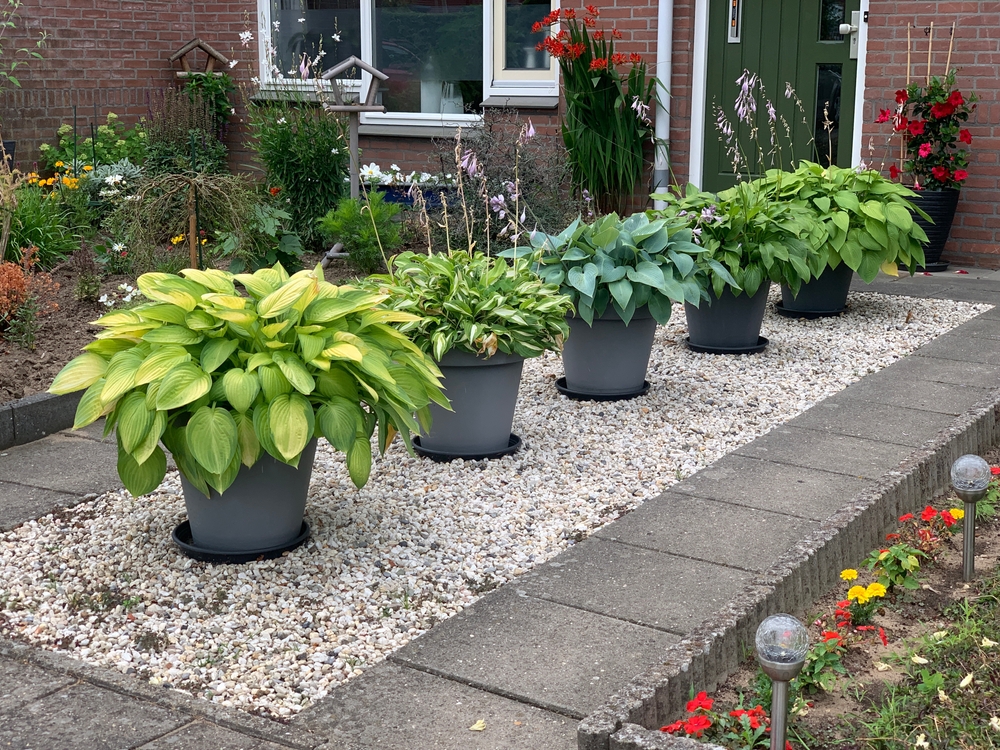
Hostas are shade-loving plants that can tolerate some sun and rain, making them a great choice for a partially shaded front door. These plants are resilient and can handle heat if provided with enough water to keep the soil moist. They are best planted in well-drained soil with organic matter to retain moisture. Hostas are low-maintenance and only need to be watered regularly to keep their soil hydrated.
These plants are excellent for adding texture and greenery to your entrance, particularly in areas with less sunlight. Hostas grow in clumps and can be divided and replanted every few years to maintain their size. They are especially popular for their large, attractive leaves, which come in various shades of green, blue, and yellow. To keep them looking their best, remove any dead leaves and ensure they are getting enough moisture during the summer.
Lavender
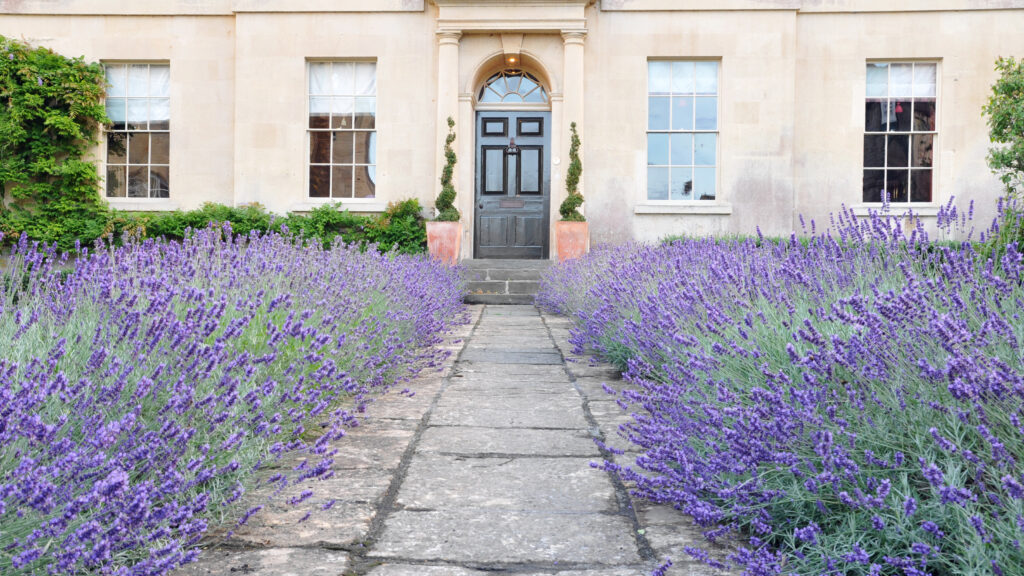
Lavender is a fragrant and hardy plant that thrives in sunny spots and tolerates both heat and occasional rain. It is a drought-tolerant plant once established but benefits from moderate watering during dry spells. Lavender prefers well-drained soil and should not be overwatered, as this can lead to root rot. Pruning it after the flowering season helps maintain its shape and encourages a strong second bloom.
Lavender’s calming scent and attractive purple flowers make it a perfect front-door plant. It grows well in containers or garden beds, adding both visual and aromatic appeal. In addition to its beauty, lavender attracts pollinators such as bees and butterflies, making it a great choice for any garden. Its resilience to heat and rain, along with its low maintenance needs, makes it an ideal plant for outdoor spaces.
Caladium
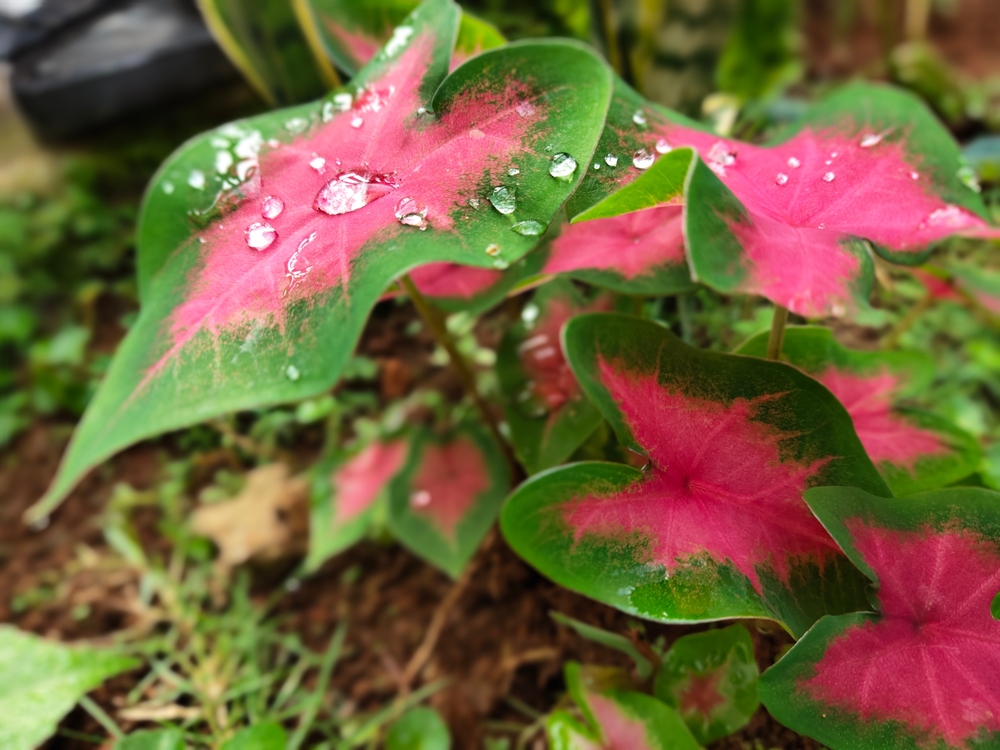
Caladiums are tropical plants known for their colorful, heart-shaped leaves that come in shades of red, pink, and white. These plants love the warmth and thrive in both full and partial sun, but they can also handle a bit of rain. They are not as heat-resistant as some other plants, so they require regular watering to keep their soil moist, especially in hot weather. Caladiums need well-drained soil to prevent root rot and should be fertilized during the growing season.
These plants can add a splash of color and texture to any front door area, creating a tropical, welcoming atmosphere. They grow to about 12 to 18 inches tall and are perfect for containers or flower beds. Caladiums do best in the warm summer months and can be grown as annuals in cooler regions. They are ideal for shaded areas, but with enough care, they can thrive in the right sunny spots.
Creeping Jenny
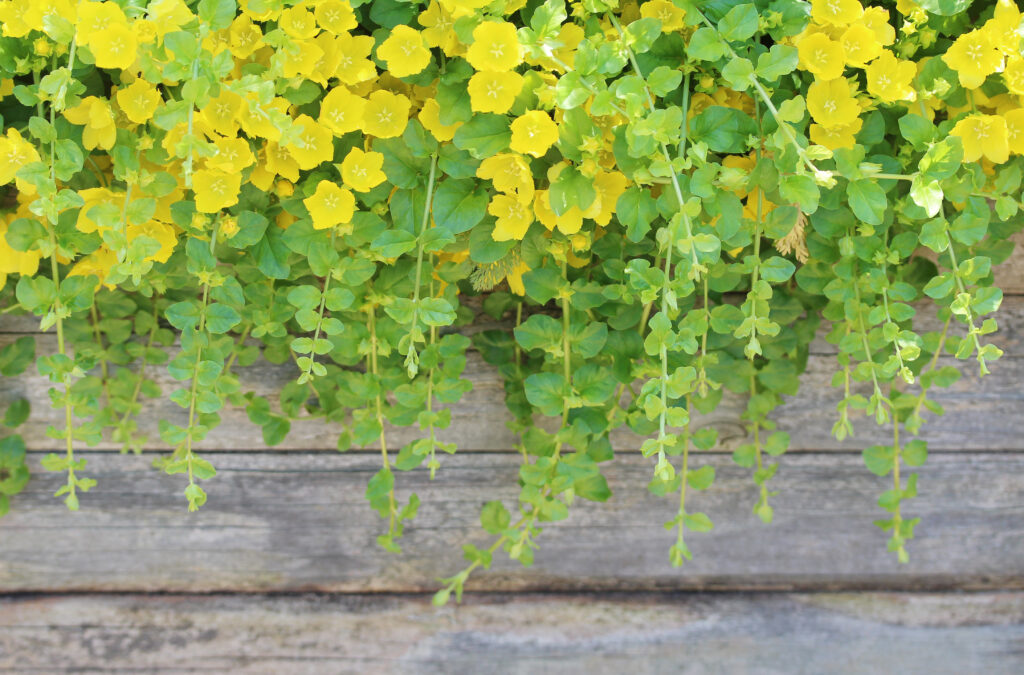
Creeping Jenny is a low-growing ground cover that features bright green or yellow leaves and is perfect for adding a pop of color near the front door. It tolerates both sun and light rain, though it thrives best in areas with partial shade. Creeping Jenny spreads quickly, making it an ideal plant for filling gaps or creating a lush carpet of greenery. It prefers moist, well-drained soil and should be watered regularly, especially in dry conditions.
This hardy plant is perfect for those looking for a plant that can handle both sun and some rain without much effort. Creeping Jenny works well as a border plant or in containers, where its trailing vines can spill over the edges. It is easy to care for, requiring little maintenance aside from occasional trimming. Creeping Jenny is ideal for gardeners who want a beautiful, low-maintenance plant for their front door.
Azaleas
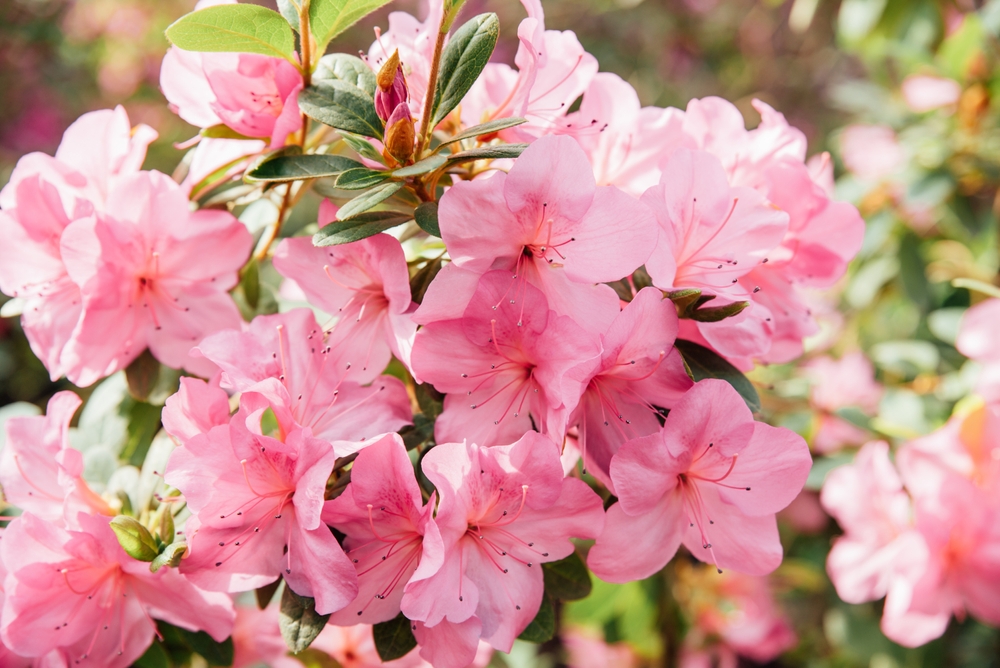
Azaleas are vibrant, flowering shrubs that can add a burst of color to your front door garden. These plants tolerate partial sun and can handle some rain, though they prefer well-drained, acidic soil. Azaleas bloom in spring, offering a variety of colors such as pink, red, and white, and can be maintained with minimal effort. Regular watering is needed during dry spells, but they generally thrive in moist environments.
Azaleas grow to 3 to 5 feet tall and make excellent foundation plants or focal points at the entrance. They prefer a slightly shaded area, especially in the afternoon, to protect them from the hottest parts of the day. Pruning azaleas after they bloom helps maintain their shape and encourages new growth. With their vibrant flowers and easy care, azaleas make a lovely addition to any front door space.
Japanese Maple

Japanese Maples are small, elegant trees that provide stunning color and texture at the front of your home. These trees can tolerate both sun and rain, but they thrive best in areas with partial shade. The beautiful red or purple leaves change color with the seasons, making them a standout in your garden. Japanese Maples prefer slightly acidic, well-drained soil and should be watered regularly, especially during dry periods.
This tree grows up to 10 feet tall and works well in both small and large gardens. Its delicate leaves create a graceful, calming presence at your front door. Japanese Maples require minimal pruning, making them easy to maintain. With their year-round beauty, they are a fantastic addition to any garden.
Hollyhocks
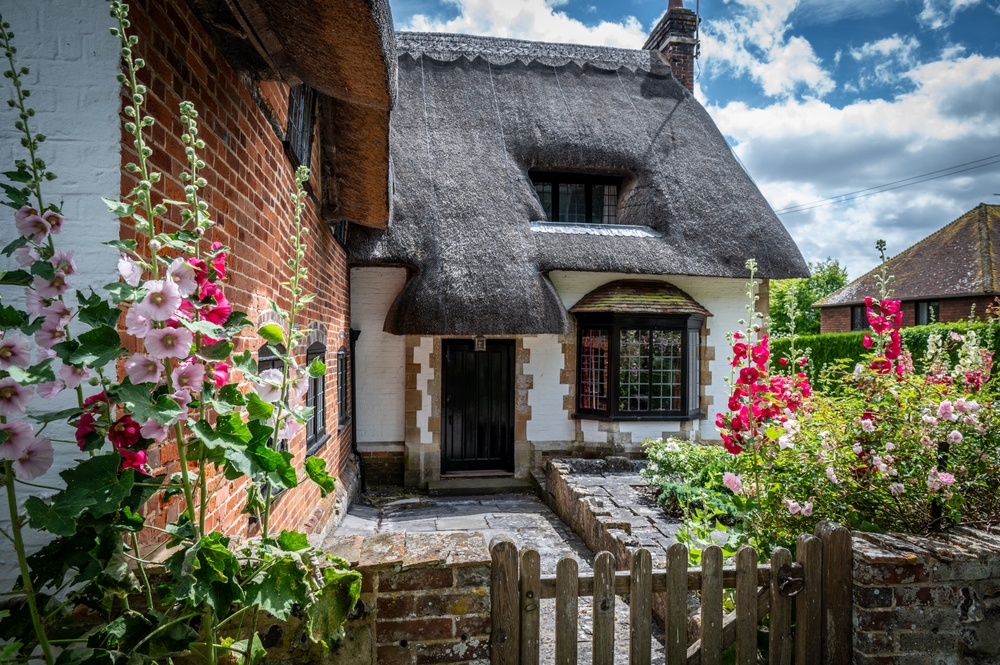
Hollyhocks are tall, flowering plants that add a dramatic look to the entrance of your home. They thrive in full sun and can handle both heat and rain, making them perfect for outdoor spaces. These plants are easy to grow and produce large flowers in a variety of colors, such as pink, white, and yellow. Hollyhocks need well-drained soil and regular watering to ensure they continue blooming throughout the summer.
Hollyhocks can reach heights of up to 8 feet, making them an ideal plant for creating a focal point by your front door. They bloom in late summer and attract butterflies and other pollinators. While they are hardy and easy to care for, they may require staking to prevent the tall stems from falling over. Hollyhocks are a great choice for anyone looking for a low-maintenance plant with beautiful, colorful flowers.
Begonias
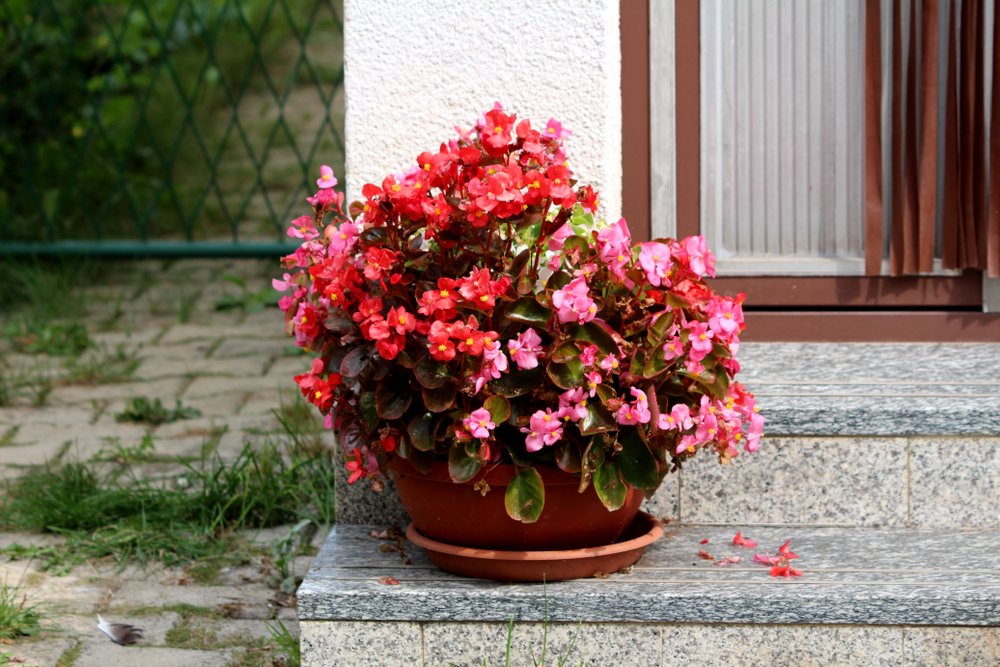
Begonias are colorful flowering plants that can tolerate both heat and rain, making them a perfect addition to your front door area. They thrive in partial to full sun, depending on the variety, and can handle a variety of weather conditions. Begonias are known for their vibrant flowers in shades of red, pink, and white, and they add a pop of color to any space. Regular watering is essential to keep the soil moist but not soggy.
Begonias can be grown in containers or directly in the ground and typically reach a height of 12 to 24 inches. They bloom continuously throughout the summer and are easy to care for, making them a great option for busy gardeners. Begonias prefer slightly acidic soil and benefit from occasional fertilization. Their ability to handle sun and rain makes them a versatile plant that will thrive in many garden settings.
These plants not only enhance your home’s curb appeal but also help attract pollinators and create a relaxing environment. With the right care, your front door area can become a stunning focal point for both you and your visitors.
This article originally appeared on Avocadu.
